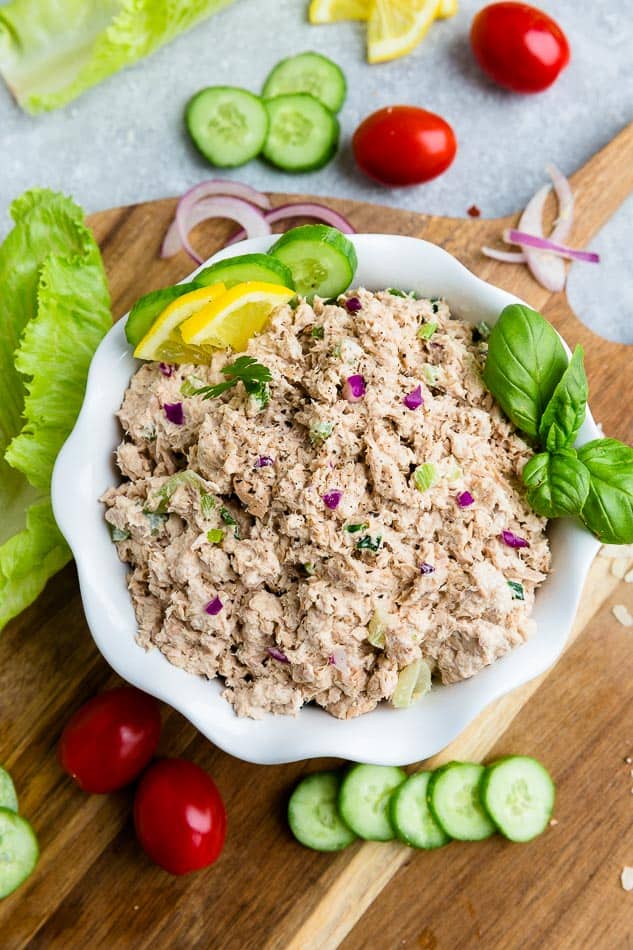The Role Of Eggs In Traditional Tuna Salad
The Role of Eggs in Traditional Tuna Salad
Versatility and Texture
Eggs are an essential component of traditional tuna salad, providing essential textures and flavors.

Versatility
They add creaminess and richness, mellowing the robust flavor of tuna. Their neutral taste allows them to blend seamlessly with different ingredients.
Texture
Hard-boiled eggs provide a agency and satisfying chew, contrasting the gentle flakiness of tuna. They also create a creamy base that binds the salad collectively.
Flavor
Eggs add a subtle eggy taste that complements the tuna and different components, such as celery and onion. They also provide a supply of protein and different vitamins.
Overall
Without eggs, tuna salad would lack its signature creaminess and texture, making it a less satisfying dish.
Enrichment of Flavor Profile
Eggs play a vital function in traditional tuna salad by providing a creamy, binding agent that holds the salad together whereas adding depth of taste.
The yolks of the eggs, which are rich in fat and protein, create a clean and velvety texture that coats the tuna and other components, enhancing the general style and mouthfeel.
In addition, the eggs add a subtle sweetness and umami taste to the salad, complementing the savory tuna and tangy mayonnaise.
Furthermore, the egg whites present structure and stability to the salad, preventing it from becoming too unfastened or watery.
Overall, eggs are an essential ingredient in traditional tuna salad, as they not solely enhance the flavour profile but also contribute to the salad’s texture and binding properties.
Influence on Consistency
Eggs are a key ingredient in conventional tuna salad, contributing each flavor and texture to the dish. The yolks provide richness and creaminess, whereas the whites add construction and stability. The mixture of the two creates a smooth, cohesive salad that’s straightforward to spread and holds its shape well.
The variety of eggs utilized in tuna salad can differ depending on private preference, but a good starting point is one egg for every two cans of tuna. This ratio will produce a salad that’s creamy and flavorful without being too heavy or eggy.
In addition to their role in taste and texture, eggs additionally assist to thicken tuna salad. The proteins within the eggs coagulate when heated, creating a network of bonds that traps water and prevents the salad from becoming watery or runny.
If you’re making tuna salad ahead of time, it could be very important maintain the eggs in thoughts when contemplating how long to retailer the salad. Eggs can turn into a breeding ground for micro organism, so it is very important refrigerate the salad promptly and consume it inside 2-3 days.
Binding Properties
– The most conventional kind of tuna salad is made with mayonnaise, celery, and onion; hard-boiled eggs are additionally a typical addition.
– Tuna salad is a flexible dish that can be served on sandwiches, crackers, or as a dip.
– Hard-boiled eggs play an essential function in traditional tuna salad by binding the components together and including flavor and texture.
– The binding properties of eggs come from the proteins that they include.
– When eggs are cooked, the proteins coagulate and type a community that traps the opposite ingredients in the salad.
– This community also gives the salad a creamy texture.
– In addition to their binding properties, eggs also add taste and texture to tuna salad.
– The yolk of a hard-boiled egg is wealthy and flavorful, and the white provides a bit of chewiness.
– Overall, hard-boiled eggs are an essential a part of conventional tuna salad and play a key function in giving it its distinctive flavor and texture.
Traditional and Modern Variations
Eggs play a vital function in traditional tuna salad, contributing to its creamy texture and wealthy taste. They act as a binder, holding the salad elements collectively and making a smooth, cohesive mixture.
Traditionally, tuna salad is made with hard-boiled eggs. The number of eggs used can vary relying on private choice and the specified consistency of the salad. Typically, one or two massive eggs are used for the standard serving.
The eggs are finely chopped or mashed and combined with the tuna, mayonnaise, and other elements. The eggs help to thicken the salad, making it easier to unfold and stopping it from becoming too runny.
In modern variations of tuna salad, eggs could additionally be omitted or changed with different components, similar to Greek yogurt, avocado, or mashed beans. However, eggs remain a staple ingredient in basic tuna salad recipes.
Here are some examples of conventional and modern variations of tuna salad:
- Traditional Tuna Salad: Tuna, hard-boiled eggs, mayonnaise, celery, onion, and optionally, pickles or olives.
- Greek Yogurt Tuna Salad Recipe Salad: Tuna, Greek yogurt, hard-boiled eggs, celery, onion, lemon juice, and contemporary dill.
- Avocado Tuna Salad: Tuna, mashed avocado, hard-boiled eggs, pink onion, and cilantro.
- Bean Tuna Salad: Tuna, mashed beans (such as chickpeas or black beans), chopped celery, onion, and a light-weight dressing made with mayonnaise, Greek yogurt, or olive oil.
